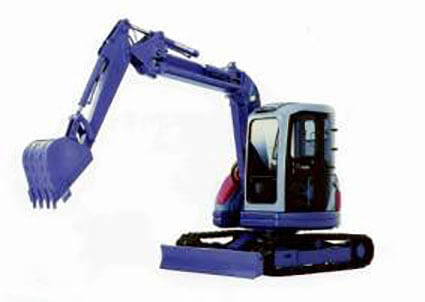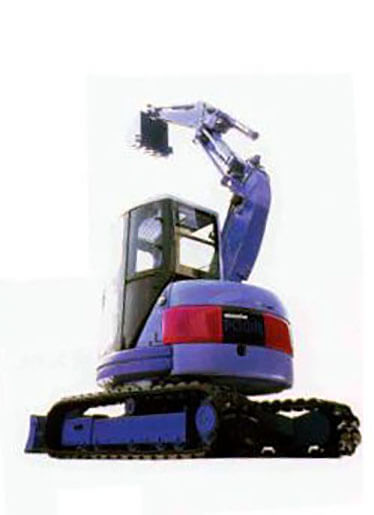1990
While equipment built to accommodate urban environments, by generating less noise, vibrations and emission, became more common, super sized equipment that could withstand harsh working conditions in places like giant mines were also developed.

As the demand for tight quarter shovel increased, Komatsu applied all the newest technologies to this model. With a brand new exterior appearance and the color changed to violet, PC50UU-2 lightened up the look of the construction site, which brought a more positive image to the industry.
Weight: 5250kg, Bucket capacity: 0.2m3

The cabin had a sliding door to improve both residential and operational aspects. The door stayed within the turning radius even when it was open all the way. The engineers looked into all sorts of different doors from airplanes, buses, and trains to finalize the design.
Packed with patents, PC50UU-2 received a G mark (good design award) in the industrial machinery category.
Hydraulic excavator
Since its first emergence in 1951, it took only 50 years for the hydraulic shovel to establish its primary position on construction sites worldwide. Its size ranges from mini to super size depending on the scale of construction, and during the half century, it kept evolving by achieving a minimum rear-swing radius and adapting styles that would work with characteristics of each site. Mirroring the movement of a human hand, a hydraulic shovel will continue to evolve during the 21st century.